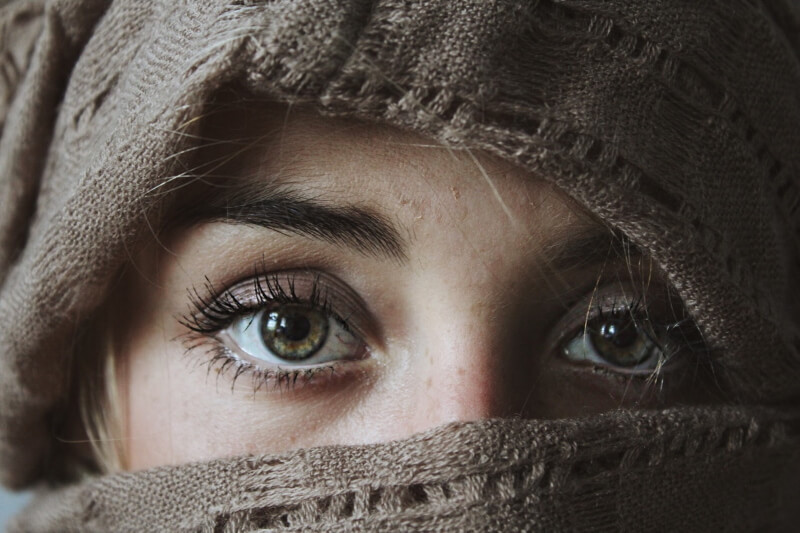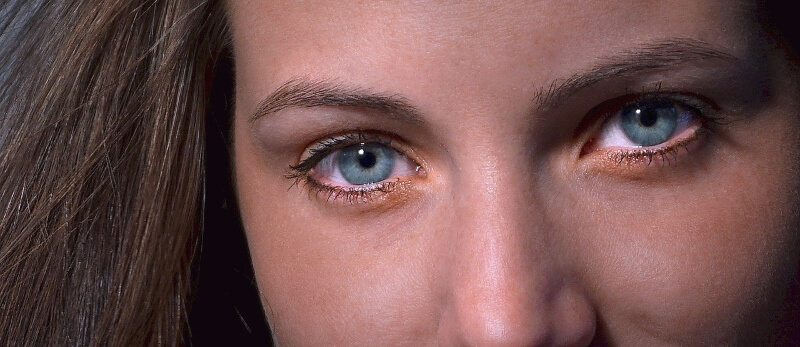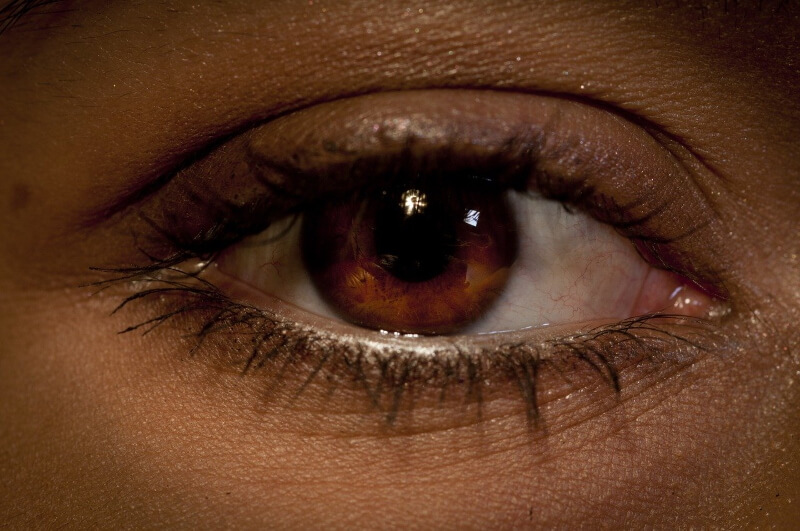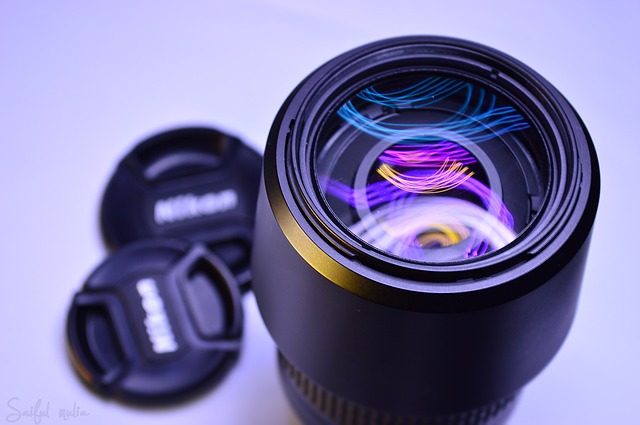Photographing the human eye is one of the most rewarding subjects to work with when done right. The eyes are full of character and are naturally magnetic for viewers. However, there are technical challenges we need to explore before starting. So how do we go about photographing the human eye properly?
What Lens Should I Use To Photograph Human Eye?
While regular zoom lenses seem like the obvious solution, they, unfortunately, have limitations that aren’t obvious at first. Zoom lenses can often create a decently close perspective. However, they don’t have the close focus ability you need for a high reproduction ratio that helps you capture fine details.
Most standard zoom lenses will only focus as close as a couple of feet, with telephoto zoom lenses needing even more distance. If you’re looking to get details of swirls within the iris, eyelashes, and other intimate expressions, a macro lens is your best bet. True macro lenses have a 1:1 (or more) reproduction ratio; this means that the image produced by the lens is a life-sized projection onto the sensor.


Image by Rudy and Peter Skitterians from Pixabay
Macro lenses focus as closely as a few millimeters away from their subjects/ This way when you generate your final image, the eye will show immense levels of detail. Macro lenses are also some of the sharpest, high color contrast lenses you can buy!
The only downside is that they are prime lenses, meaning the focal length can’t be changed, unlike a zoom lens. On the other hand, zoom lenses aren’t nearly as sharp as prime lenses because primes are optimized for a specific focal length.
Focusing on the Eye With a Macro Lens
Macro photography is a very delicate art because the depth of field is razor-thin. For those who don’t know, depth of field is how much of a given scene is in sharp focus. When using a normal lens at f/5.6, anywhere from the entire scene (wide-angle lens) to most of your subject (short telephoto) will be in focus.
However, with a macro lens, even stopping down to f/16 will not cover the entire scene if there’s a significant amount of space between the subject and the background. Shooting with narrow apertures means you’re working with a fraction of the light available in the room. This means extra light is essential when shooting with macro lenses.
Manual focusing is best when photographing the human eye so you can perfectly place the depth of field as needed. Since you’re working with an unmoving subject you can sacrifice time for precision here.
Focus can also occasionally miss when the subject is so close. Most modern mirrorless cameras have focusing aids in their electronic viewfinders such as Focus Peaking that make macro photography easier than ever before.
A stable tripod is another tool to bring when photographing the human eye. Less available light means we should be using slower shutter speed to compensate for exposure. ISO should be kept as low as possible to keep our image clean and noise-free. Depending on your sensor you can push the ISO slightly to compensate for a few stops of aperture.
However, it’s far better to use a slow shutter speed (1/30th to 1/60th of a second) and work in bright natural light or with a flash.

Photo by Noelle Otto from Pexels

Image by athree23 from Pixabay
Creating a Catchlight on the Eyes
The human eye is the window to the soul. And the glossy surface makes it ideal for capturing catchlights that can express emotion, depth, and even tell stories when carefully chosen.
Unless you’re shooting with a flash, you’ll wait to find a window with ample natural light or work outdoors. Remember that we usually need to stop down macro lenses significantly in order to get enough in focus, which drastically cuts down on the amount of available light.
Ring lights are popular not only for vloggers but portrait photographers as well. The ring-shaped light is a classic look and a diffuser can be added for a softer illumination across more of the subject’s face.
If using a natural source of light, keep in mind that the catchlight can be a storytelling element. A lamp or window, combined with directing your subject to look in a particular direction, can suggest waiting for someone, sadness, anger, or something else entirely. While the eye is an object of beauty it can also mirror a scene in complex ways.
Preparing the Subject
First, you should prepare your subject’s eyes the same way you would with any model. Have them examine themselves in the mirror for stray or tangled lashes. Clear eye drops are inexpensive and quickly reduce inflamed blood vessels that come with eye strain, stress, or lack of sleep. These create a classic white sclera for close up photography.
So long as your subject’s eye remains relatively still shutter speeds of around 1/30th to 1/60th of a second can work. This gives you excellent light-gathering ability with little chance of motion blur so long as your camera is mounted onto a tripod. If you intend to capture more of the subject’s face you may need to use a faster shutter speed if they have trouble remaining still.
Post-Processing Our Photograph
I recommend making adjustments to Sharpness and Clarity in Lightroom. Sharpness defines the borders of objects within the frame, bringing out even more fine details in our macro image. The Clarity slider adds micro-contrast, heightening changes in color contrast that express as twisting bands of color in the iris that sometimes go unnoticed.
Don’t forget to shoot RAW before importing to your image processing software of choice! RAW files contain all of the original image data and have far more flexibility than JPEG files do.

Image by Stefan Keller from Pixabay

Image by 3rdeyedezine0 from Pixabay
Conclusion
Photographing the human eye is something every photographer should try at some point. The eyes are what draw our own attention whenever we engage with a person. And no matter the photograph, the eye is always a strong focal point. So why not grab a macro lens, find some great light, and make the human eye your main subject today.
Related posts
The Macro Lenses Explained – Samples & Recommendations
Best Flash For Macro Photography
Adobe Photoshop Lightroom 5 Review – My Favorite Photo Editing Program
Thanks for reading, I hope you enjoyed the article if you have any questions just post below & I will be happy to answer you.
If you enjoy the site, don’t forget to subscribe, we will only inform you when a new article is posted.
The featured Image by Nathan Wright from Pixabay










Thanks for sharing informative article, I really like this post.
I have really never thought of taking pictures of the eye. Those are totally and highly close up pictures and as you have said, they would need macro lenses. I think it is safe to say that this type of pictures are meant for those who have studies the art but you have explained how it works. I used to this k that the models in this cases have a perfect eye, I didn’t know that they sometimes need some droplet. Thanks for the infor here expecially on those lenses.
Thanks for your feedback
Hi, it is a great and nice feeling to know that someone will create a great website like this and also create a write up on an article like this. The human eye is one part of the body that gets so much attention without notice. It is what describes the strength of beauty of a person.
I really appreciate your nice comment, thanks